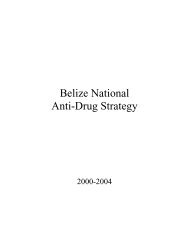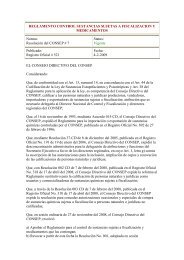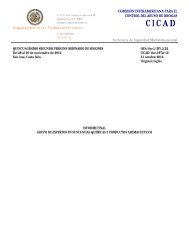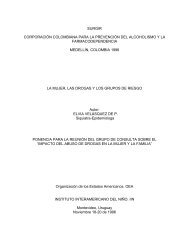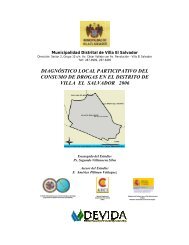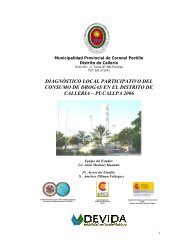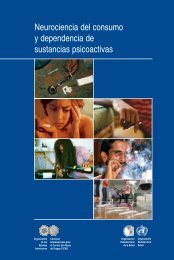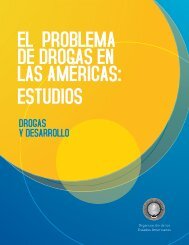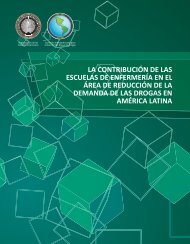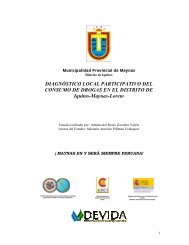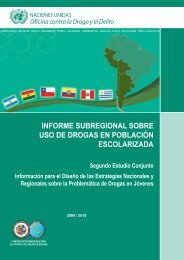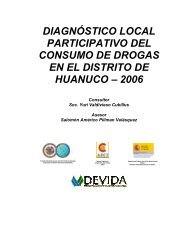The EFQM Excellence Model In Action - cicad
The EFQM Excellence Model In Action - cicad
The EFQM Excellence Model In Action - cicad
Create successful ePaper yourself
Turn your PDF publications into a flip-book with our unique Google optimized e-Paper software.
2<br />
Welcome to the <strong>EFQM</strong> Policy & Strategy Booklet -<br />
number 4 in a series of 10 Advice Booklets.<br />
<strong>The</strong> <strong>EFQM</strong> Advice Booklets<br />
<strong>The</strong>se Booklets have been primarily designed to support organisations with an interest in the Recognition of Commitment to<br />
<strong>Excellence</strong> strand of <strong>EFQM</strong>’s three-tiered European Recognition Scheme. However, they will also appeal to anyone<br />
interested in introducing the concepts, or improving the practices, of Performance <strong>Excellence</strong> in their organisation.<br />
Booklet 0 is the introductory Booklet. It provides general advice on the implementation of <strong>Excellence</strong>, based on the <strong>EFQM</strong><br />
<strong>Excellence</strong> <strong>Model</strong>. It outlines what you can expect to read in the other 9 Booklets, as well as establishing links and<br />
relationships between the Booklets. It will also introduce you to the European Recognition Scheme and how your organisation<br />
can become involved.<br />
Booklets 1 - 9 are each based on one of the 9 Criteria of the<br />
<strong>EFQM</strong> <strong>Excellence</strong> <strong>Model</strong> and they provide advice and ideas<br />
for developing Good Practice approaches across all 9 Criteria.<br />
You are currently reading Booklet 4 - PARTNERSHIPS &<br />
RESOURCES.<br />
Partnerships and Resources is Criterion 4 in the <strong>EFQM</strong><br />
<strong>Excellence</strong> <strong>Model</strong> and is defined as “How the organisation<br />
plans and manages its external partnerships and internal<br />
resources in order to support its policy & strategy and the<br />
effective operation of its processes.”<br />
We can see how PARTNERSHIPS & RESOURCES fits into a<br />
framework of <strong>Excellence</strong> (left).<br />
<strong>The</strong> <strong>EFQM</strong> <strong>Excellence</strong> <strong>Model</strong> is a registered Trademark<br />
For more information about the <strong>EFQM</strong> <strong>Excellence</strong> <strong>Model</strong> or<br />
Self-Assessment, please contact <strong>EFQM</strong>’s Representative<br />
Office, info@efqm.org or check out <strong>EFQM</strong>’s web site on<br />
www.efqm.org.<br />
Audience and Purpose<br />
This Booklet is relevant to all types of organisations: commercial or public, for profit, not for profit, voluntary and charities, large<br />
or small.<br />
We have designed this Booklet as a practical knowledge tool to support you in considering how to achieve Performance<br />
<strong>Excellence</strong> within the area of Partnerships & Resources. We want this Booklet to stimulate your creativity, helping you to<br />
produce ideas for turning other people’s Good Practice into your own unique way of making best use of both partnership<br />
opportunities and the resources at your disposal.<br />
We also want to demonstrate the linkages between how you manage what you do (the Enablers) and what is being achieved<br />
in relation to your Results.<br />
Why Partnerships & Resources<br />
Any organisation has a finite number of resources at its disposal. <strong>The</strong> challenge is how to make best use of these finite<br />
resources.<br />
One such resource is its workforce and the issues of how best to manage that specific area, (its human capital), is dealt with<br />
in Booklet 3.<br />
<strong>The</strong> other resources at an organisation’s disposal can be segmented into two categories.<br />
<strong>The</strong>re are those resources that are “within its four walls” <strong>The</strong> organisation has direct control over these inanimate resources<br />
and typical examples would be the buildings, the machinery, the documented systems and procedures, the materials,<br />
technology, patents, etc.<br />
<strong>The</strong> second grouping defines those resources an organisation has access to “outside its four walls”. This second grouping<br />
consists of other organisations that it could do business with, organisations that can help it, for instance, to deliver customer<br />
satisfaction or share investment in expensive research. <strong>The</strong>se organisations could be some of your suppliers. Perhaps if you<br />
are a public sector entity, it could be a commercial business, university, and even, in certain circumstances, your competitors.




